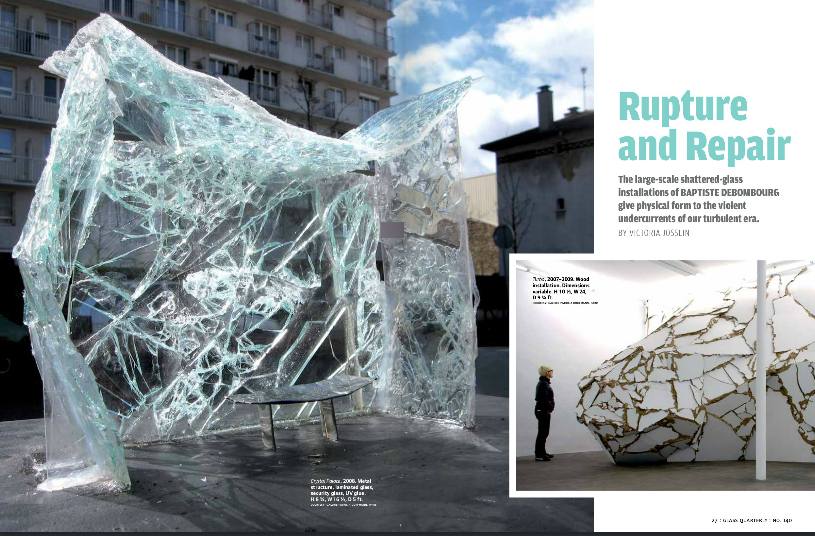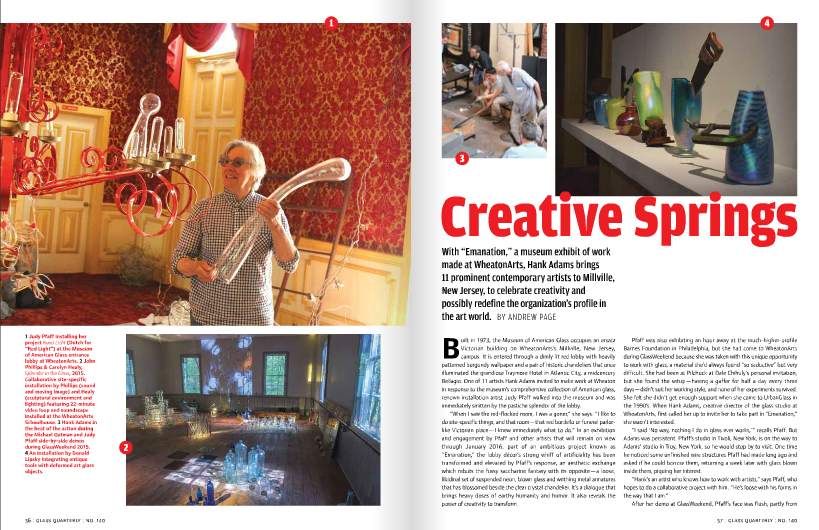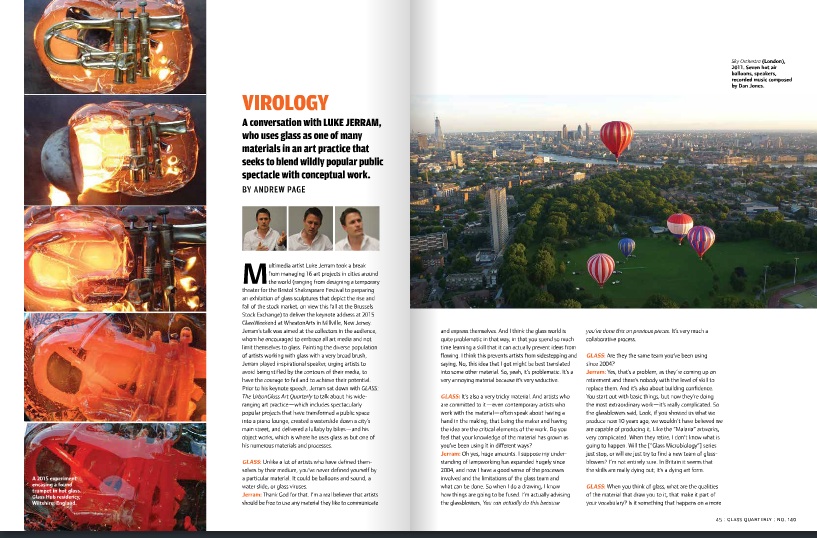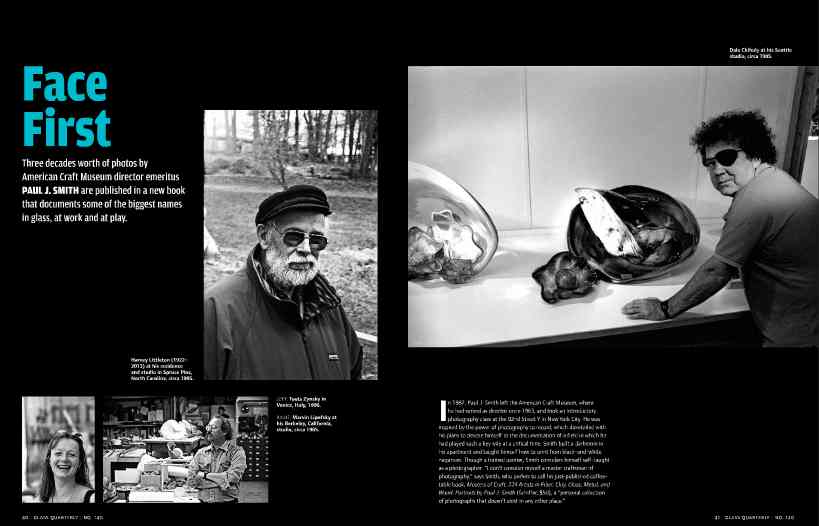The Fall 2015 edition of GLASS: The UrbanGlass Art Quarterly (#140) is hitting newsstands and subscriber mailboxes over the next few days. On the cover is a work by French installation artist Baptiste Debombourg, a room with massive windows collapsing inward. For her article, contributing editor Victoria Josslin presents a mediation on Debombourg’s grand catastrophe in Aerial (a 2012 site-specific installation at the Brauweiler Abbey near Cologne, Germany), considering the scene as a frozen moment just after the impact of some cataclysmic explosion outside.

Josslin also considers Debombourg's fractured bus shelter, titled Crystal Palace, that looks like a Paris landmark after a brutally destructive riot. As we are inundated with images and news of our increasingly tumultuous times, Debombourg’s artifacts of unnamed violence tap into our collective unease and provoke not just reflection but, potentially, action. Josslin ponders whether it would be accurate to consider this work conceptual, or if it requires another term to encompass its multilayered yet open-ended impact on viewers.

Elsewhere in this issue, we examine WheatonArts's bold bid to elevate its visibility by drawing top-name artist to Millville, New Jersey, for a project entitled "Emanation," a year-long creative collaboration with 11 artists including Judy Pfaff, Donald Lispky, Mark Dion, and Paula Hayes, to name just four. The museum opening coincided with the 2015 GlassWeekend event, and brought together the established glass collector world with a new kind of work in glass that might represent an exciting future direction for this arts organization that offers one of the most important residencies for up-and-coming artists. By also bringing in well-known artists, the organizers clearly hope that wider awareness of what makes this place special will also bring more funding.

Contributing editor William V. Ganis takes on the work of Ayala Serfaty, which occupies functional design and fine art in equal measure and with total confidence. Illuminated by LED lighting arrays, the works are built on skeletons of glass rods that give their polymer skins engrossing organic forms, with surfaces that filter light across a broad range of effects. These works, which contributing editor William Ganis describes as what results when “intimate sentiments become externalized as equivocal works,” are being acquired by the design collections of major museum's, including the Indianapolis Museum of Art and The Corning Museum of Glass.
Also in this issue, an in-depth conversation with multimedia artist Luke Jerram, whose practice ranges from pristine glass models of deadly viruses to balloon orchestras delivering sound compositions to the unsuspecting public at daybreak. In a provocative discussion, Jerram talks frankly about the limitations of the glass studio and warns against artists becoming slaves to technique.

Finally, we present a preview of images from a new book of photographs by Paul J. Smith, the former director of the American Craft Museum. Smith shares his photo portraits of major figures in the glass world in an excerpt from his recently published book Masters of Craft: 224 Artists in Fiber, Clay, Glass, Metal, and Wood (Schiffer, 2015).
Not a subscriber yet? Don’t miss out.



